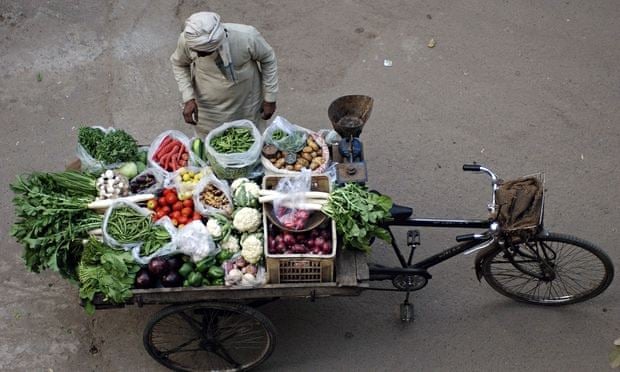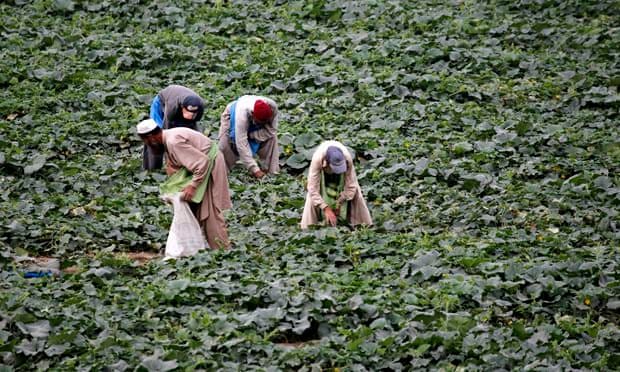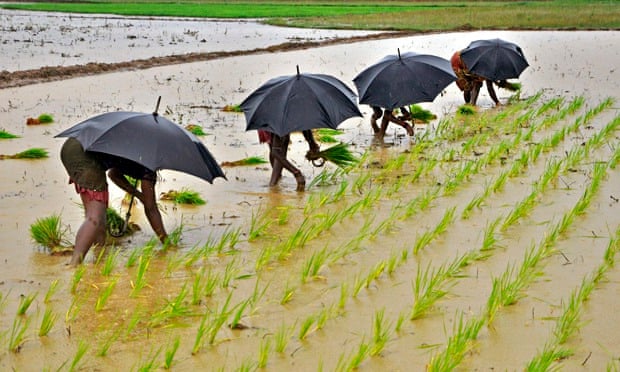FROM: FAO
http://www.fao.org/news/story/en/item/270380/icode/
FAO honors achievements of Brazil, Cameroon, Ethiopia, Gabon, the
Gambia, Iran, Kiribati, Malaysia, Mauritania, Mauritius, Mexico, the
Philippines and Uruguay
A woman selling vegetables in the Gambia, one of the countries honored by FAO for progress in fighting hunger.
30 November 2014, Rome
- Thirteen countries today won recognition from FAO for outstanding
progress in fighting hunger, an achievement which includes reaching
international targets ahead of the end-of-2015 deadline.
Brazil, Cameroon, Ethiopia, Gabon, the Gambia, Iran, Kiribati, Malaysia,
Mauritania, Mauritius, Mexico, the Philippines and Uruguay are the
latest in a growing list of countries to make great strides in combating
undernourishment.
This includes the early achievement of the
Millennium Development Goal 1 (MDG-1)
hunger target - to halve the proportion of hungry people by 2015 - or
the more stringent 1996 World Food Summit (WFS) target of halving the
absolute number of hungry people by 2015.
During a ceremony at
FAO headquarters, the Organization's Director-General, José Graziano da
Silva, awarded diplomas to government representatives of the 13
countries.
"You have overcome major challenges in difficult
global economic conditions and policy environments. You have
demonstrated the will and mobilized the means," Graziano da Silva said
addressing the award recipients.
Progress in eradicating
worldwide hunger over the next ten years "is gaining momentum", but much
more needs to be done - 805 million people still suffer from chronic
undernourishment - the FAO Director-General said, urging countries to
accelerate progress.
To achieve this, there is a need to
"improve the quality and efficiency of food systems, promote rural
development, increase productivity, raise rural incomes, improve access
to food, and strengthen social protection," Graziano da Silva said.
According to
FAO estimates,
Ethiopia, Gabon, the Gambia, Iran, Kiribati, Malaysia, Mauritania,
Mauritius, Mexico and the Philippines have now reached the MDG-1 hunger
target, while Brazil, Cameroon and Uruguay have also achieved the more
ambitious WFS target of halving the number of hungry by 2015.
Among those who received diplomas on behalf of their countries were the
Gambia's Vice President Isatou Njie-Saidy, Brazil's Minister for Social
Development and Fight Against Hunger Tereza Campello, Cameroon's
Minister for Agriculture and Rural Development Menye Essimi, Ethiopia's
Minster of Agriculture Tefera Derbew, Gabon's Minister for Livestock,
Fisheries and Food Security Luc Oyoubi and Mauritania's Minister for
Rural Development Brahim Ould M'Bareck Ould Mohamed el Moctar.
To date, 63 developing countries have reached the MDG target, and six
more are on track to reach it by 2015. Of the 63 countries which have
reached the MDG target, 25 have also achieved the more ambitious World
Food Summit (WFS) target of halving the number of undernourished people
by 2015.
Key success factors in reducing hunger
The UN
State of Food Insecurity in the World 2014 (SOFI 2014)
report, released earlier this year, identified several critical factors
driving the success achieved by countries in reducing hunger. Chief
among these is transforming political commitment into effective action.
Brazil, the report noted, has put the need to combat undernourishment
at the centre of its political agenda with the launch of the Zero Hunger
programme in 2003 which introduced social protection measures, such as
cash transfers for the poor and national school meals, combined with
innovative programmes for family farming. These links between social
protection and productive support contributed to job creation and higher
real wages, as well as significant decreases in hunger and greater
income equality.
In several countries - including Ethiopia,
Gabon, the Gambia, Mauritania, Mauritius, and the Philippines - the
achievement of the internationally established goals is attributable to
economic growth and the policies put in place by governments over the
last two decades. In most countries, interventions in agriculture have
been complemented by social protection programmes aiming to provide
immediate relief to vulnerable population groups.
Cameroon was
able to improve its food security status - the country achieved the MDG
target in 2012, and has now also reached the WFS goal - despite several
hindering factors. These included fragile political and security
conditions in neighbouring countries and frequent natural disasters such
as a series of droughts and floods between 2009 and 2012.
The
statistics used to determine the attainment of the MDG and WFS targets
are produced by FAO using official data provided by member countries and
other international agencies.
The WFS goal was set in 1996,
when 180 nations met in Rome to discuss ways to end hunger. The
Millennium Development Goals were established by the international
community following the adoption of the United Nations Millennium
Declaration by the UN General Assembly in September 2000.










































